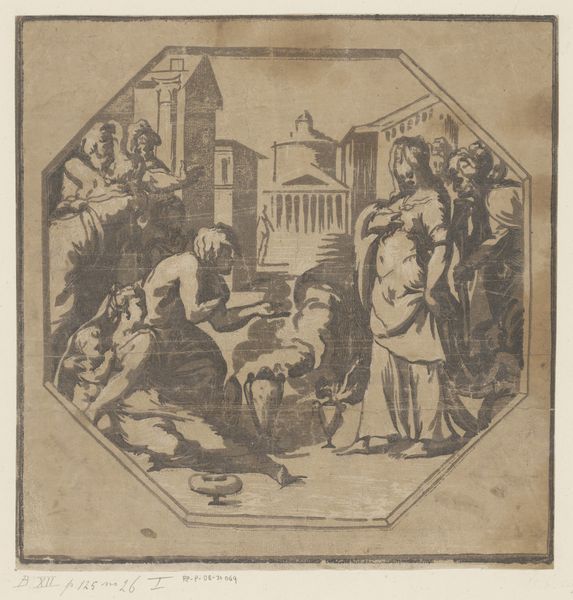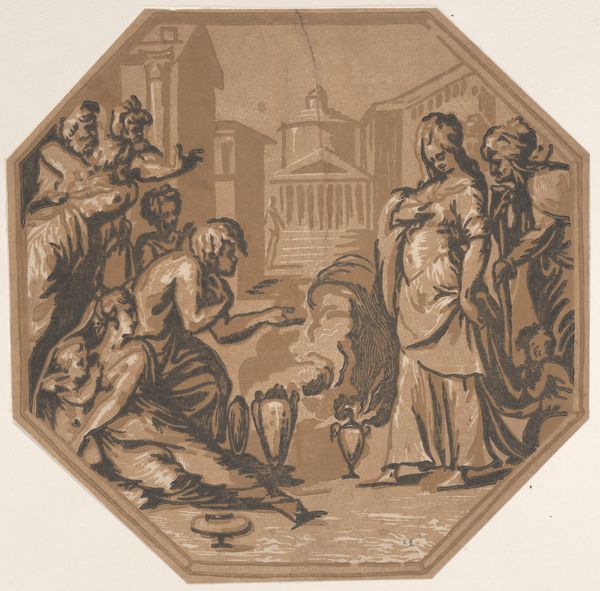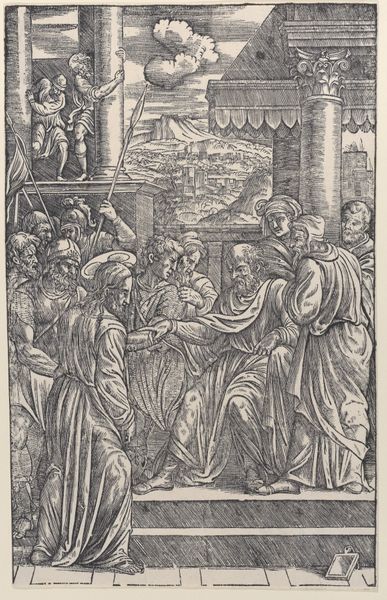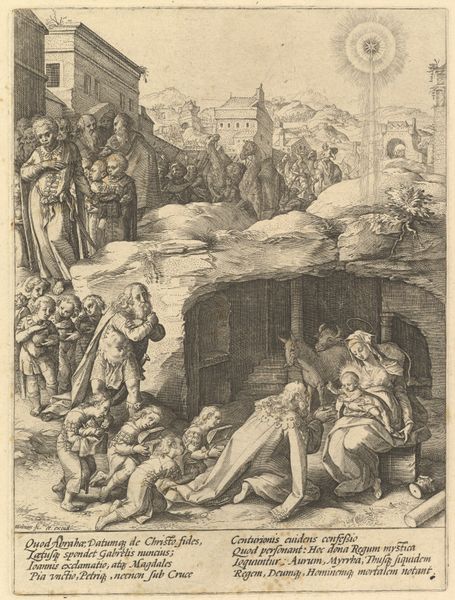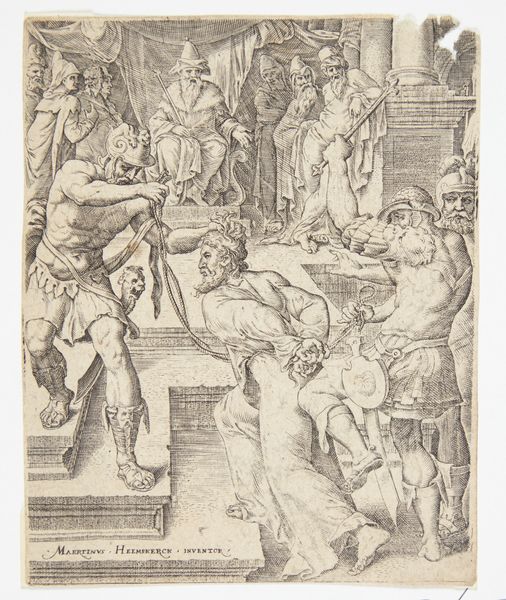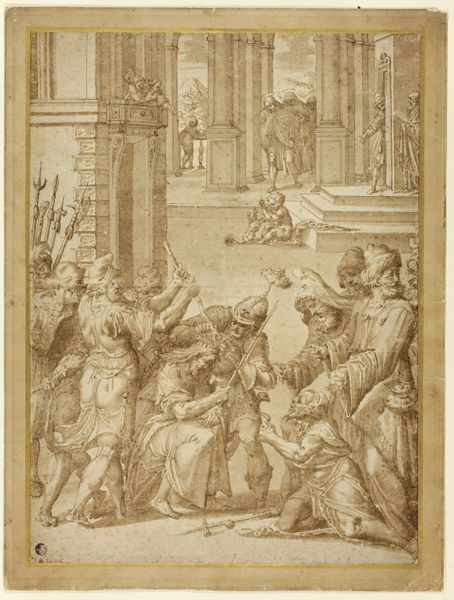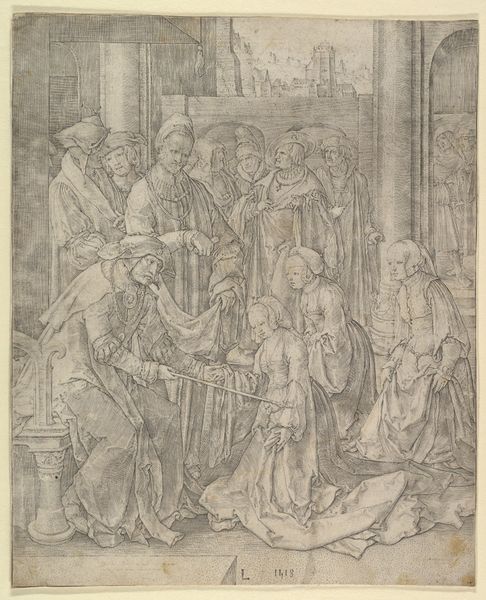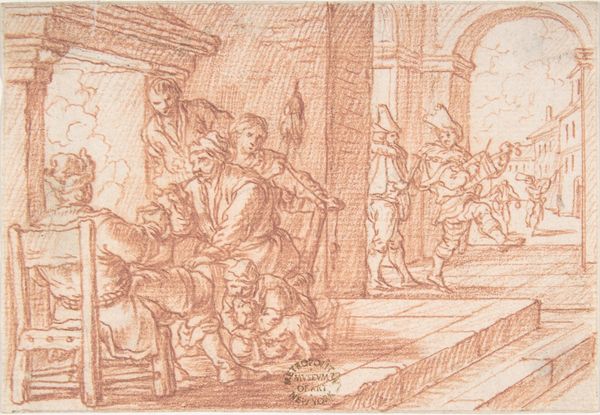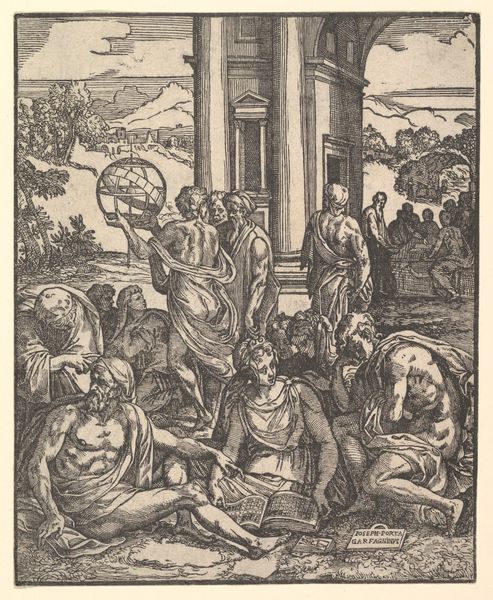
print, engraving
# print
#
figuration
#
history-painting
#
italian-renaissance
#
engraving
Dimensions: 256 mm (height) x 256 mm (width) (bladmaal)
Editor: Here we have "Homage to Psyche," an engraving dating from around 1530-1563, attributed to Antonio da Trento. The figures, drawn in earth tones, feel staged in a proscenium with somewhat frozen emotions, like figures in a tableau vivant. How do you interpret this work within its historical and cultural context? Curator: That sense of staged emotion is key. Think about the Renaissance, where humanist philosophies and the rediscovery of classical antiquity were shaping artistic production. Consider Psyche herself – in Apuleius' narrative, she represents the soul purified by passions and misfortunes. But for whom was this purification intended, or achievable? Editor: I see, so it's about the accessibility of salvation? Curator: Precisely. Engravings like this circulated widely, making classical themes accessible to a broader audience, but also reinforcing social hierarchies. Who is granted access to these narratives, and on whose terms? Notice the figures around Psyche: their expressions, their clothing – they signify social status. Who benefits from this narrative, and who is excluded or silenced by it? Editor: It's interesting that you frame it in terms of access. I hadn't thought about that element before. Curator: The Renaissance wasn’t just a rediscovery of the classical; it was a *re-interpretation*, often in ways that served contemporary power structures. The depiction of women like Psyche, often idealized and subjected to scrutiny, played a crucial role in shaping gender roles and expectations within that society. Do you see any of this here? Editor: Well, she does seem passively receiving attention…almost posed. It makes me question her agency in the scene. Curator: Exactly. And understanding that inherent imbalance helps us deconstruct the romanticized narratives often associated with Renaissance art. It invites a crucial dialogue about the dynamics of power and representation. Editor: That's a completely new perspective for me. I see how looking at historical context reveals so much about societal structures within art. Curator: And understanding art, therefore, is always understanding the politics of seeing and being seen.
Comments
No comments
Be the first to comment and join the conversation on the ultimate creative platform.
